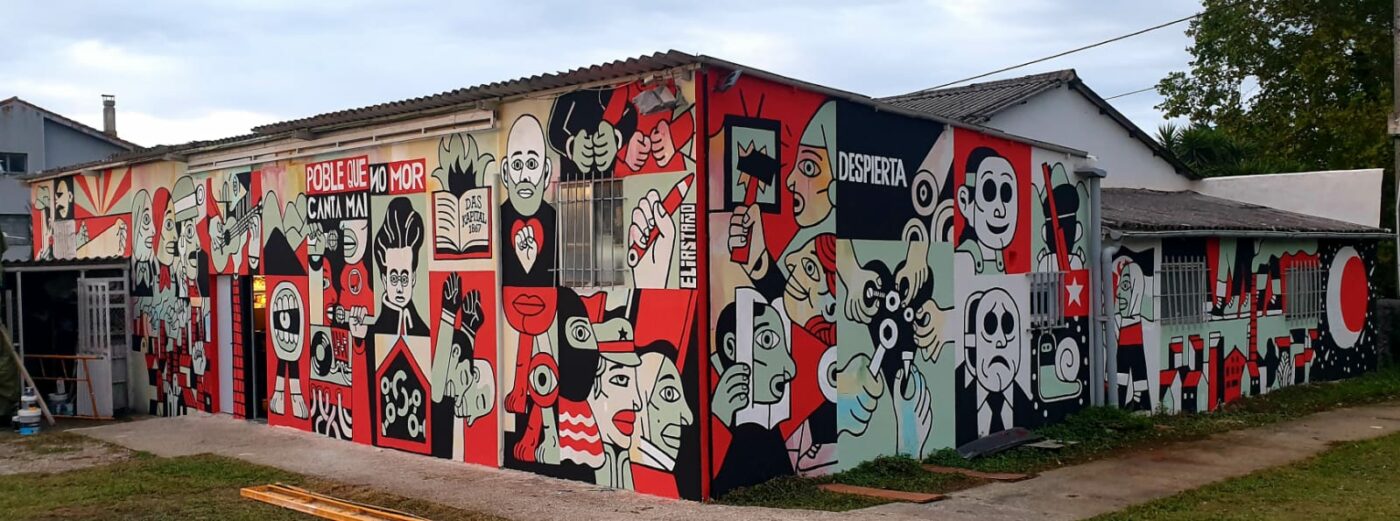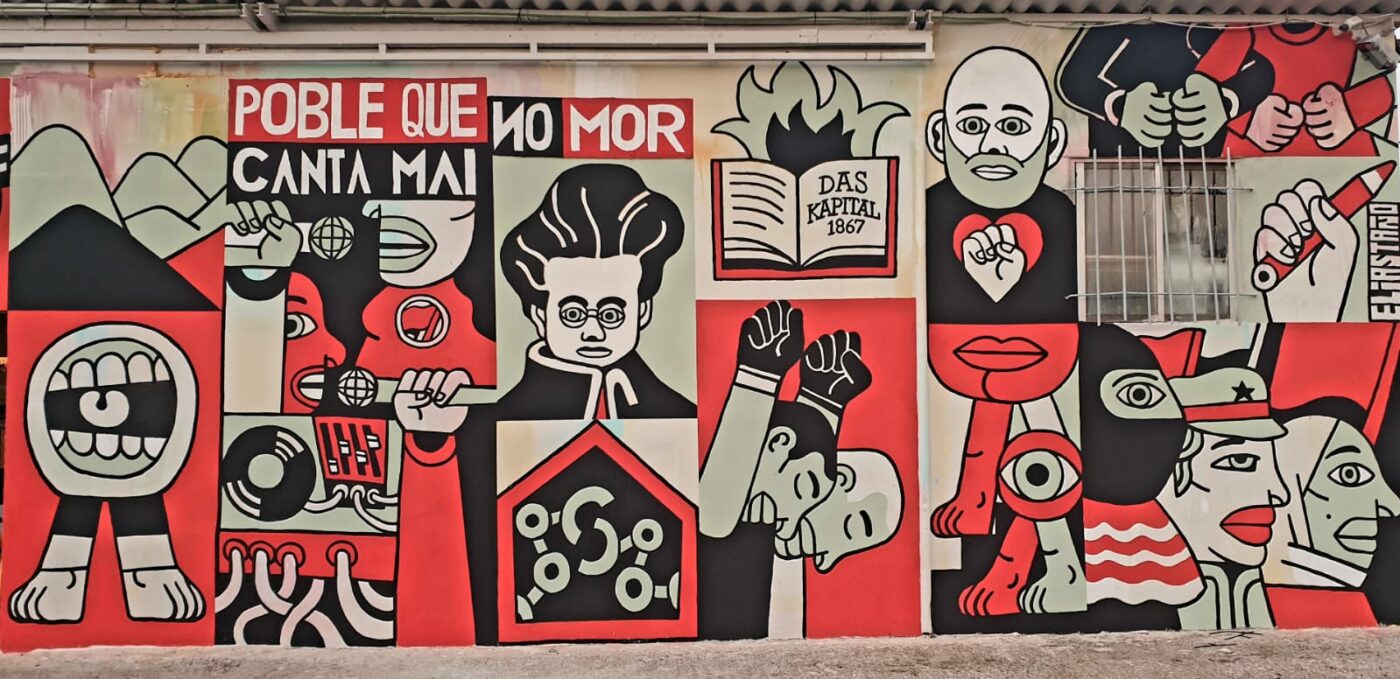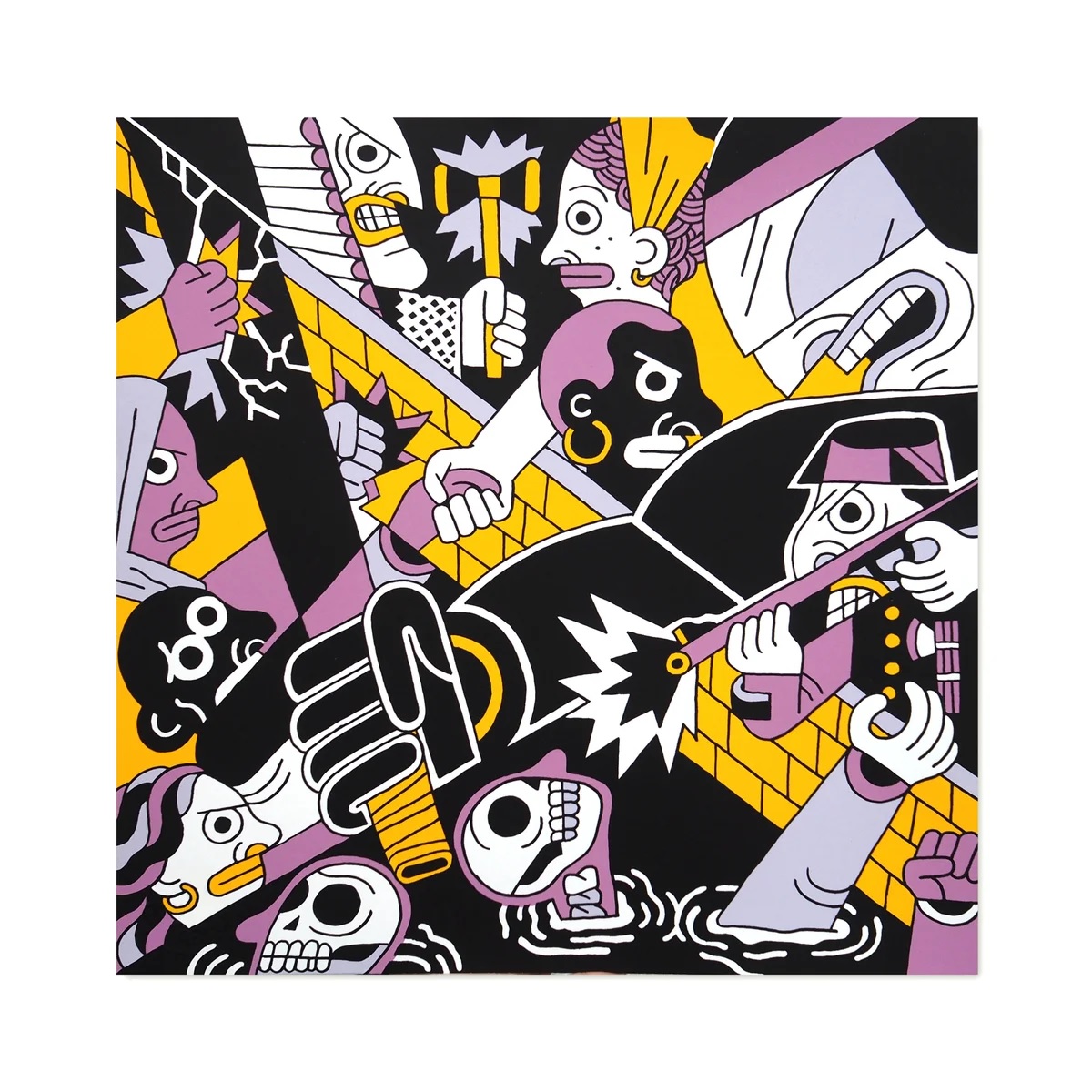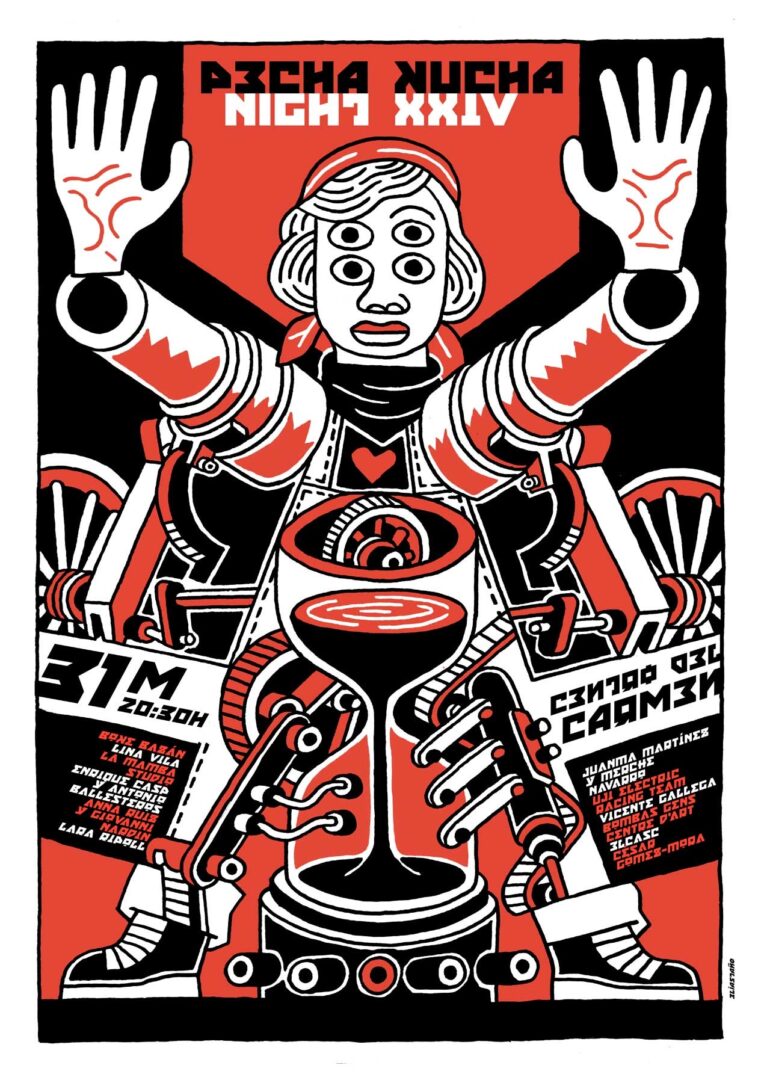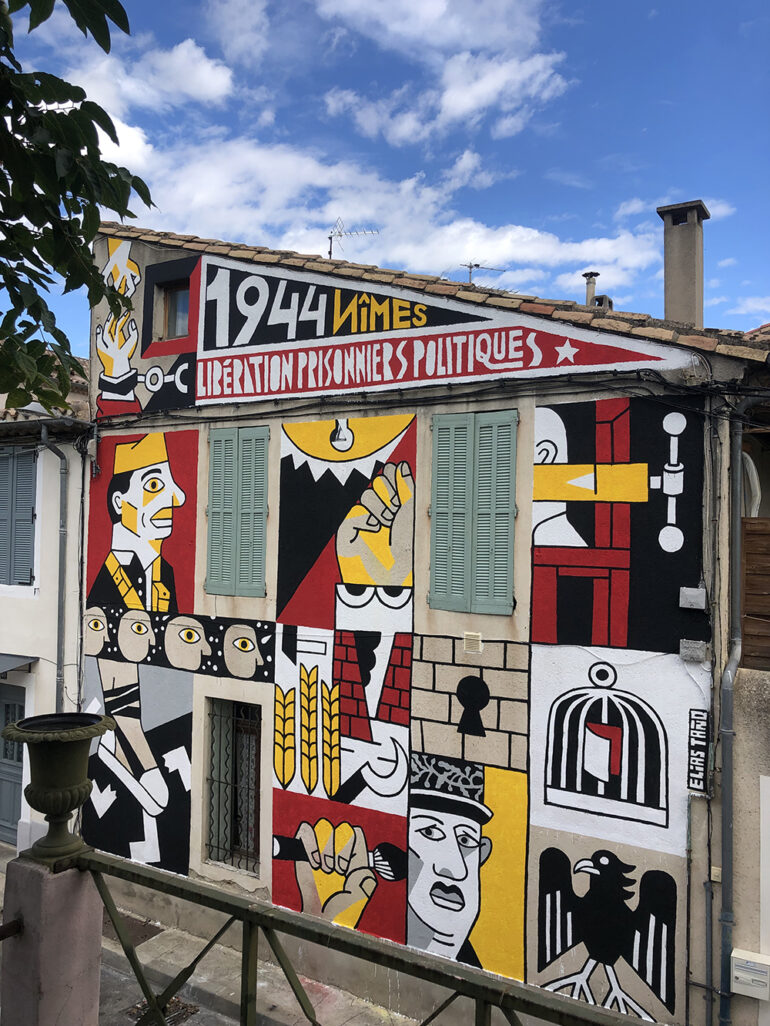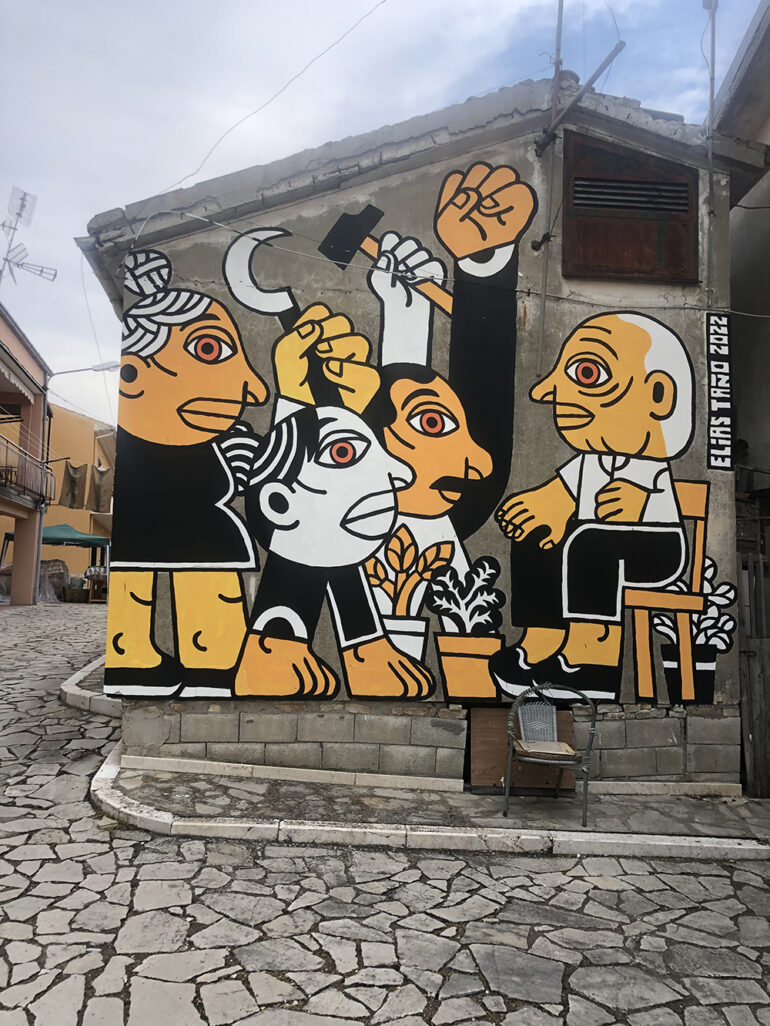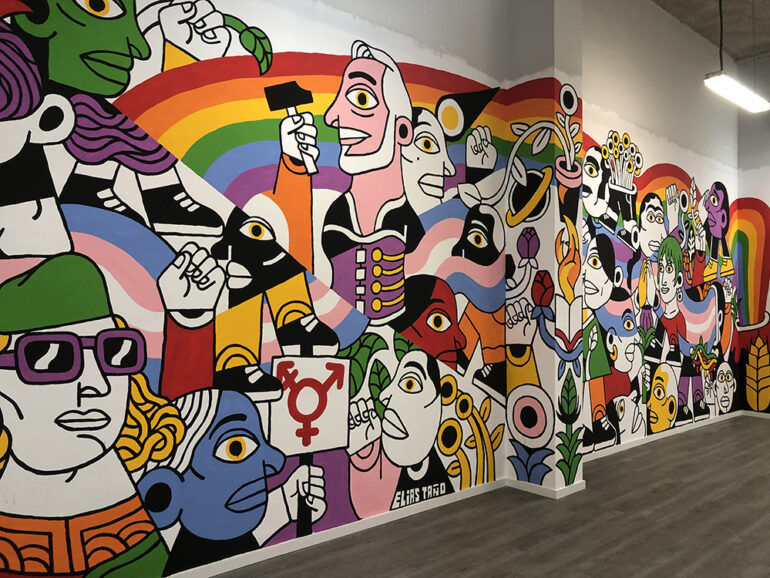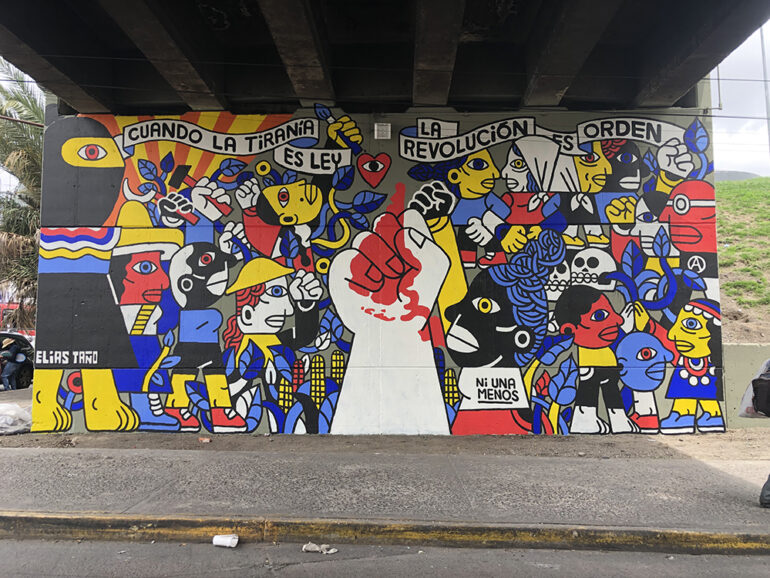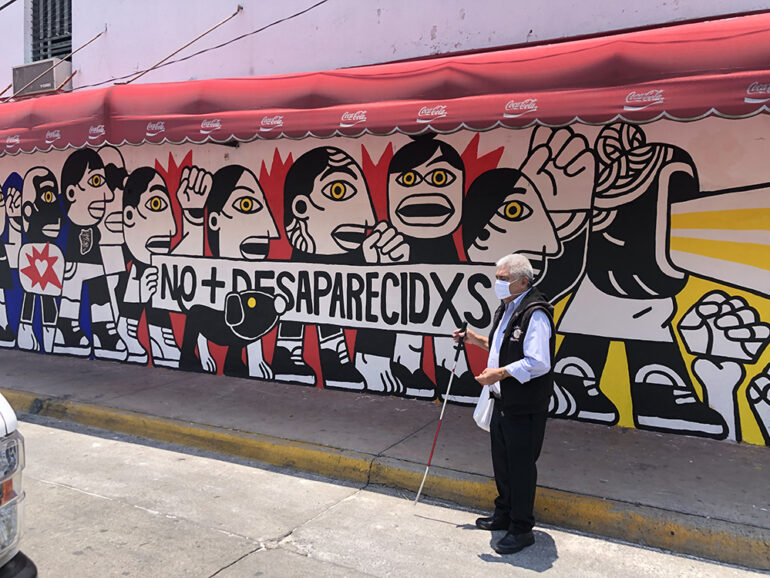Interviewing Elías Taño ? Nothing more logic for Karton zine : his paitings are covering most of the squats walls we visited around Europe ! Immediately recognizable, from Poznàn to Grenada or also Bari, the huge murals from the Tenerife native (Canaries islands) give a huge tribute to DIY, collectives initiatives, antifacist acts and abandonned buildings requisition for the refugees.
Now living in Valence, Spain, Elías Taño is hosting workshops, self-editing books, improving his screenprinting skills, and mostly (to our greatest delight) put out paint buckets, ladders and brushes to cover up massive surfaces in the streets. At the heart of his commited (but mute) art, here’s the occasion to know a little bit more about the vision of the mysterious Elias !
| By : Polka B. | Translated by : Polka B. & Nino Futur


Can you introduce yourself breively? How did you started painting?
I am someone who puts all his time and enthusiasm into drawing, on many different mediums, the main frame of my work remains political drawing. A way of drawing that makes part of a very specific class membership and a sense of anti-fascist memory. I started painting by chance, on the frontage of a theater belonging to friends in Chile. It was all improvised, but I immediately understood the mobilizing capacity a wall can have when you expose political issues on it.
You chose to keep your real name, whereas graffitti writers who uses a signature. Illegality (anonymity)is not concielable with your art ?
I’m not really connected to the graffiti world or “street art” stuff, I came to the mural format as a political consequence of my work as a designer.
If you are able to reflect the public spaces and the contradictions of the capitalist system that you can create class consciousness, and anticipate that you have to question the balance of power, why not?
Anonymity makes no sense to me in a political work, from which I don’t need to hide my face. Concerning this decision, initially I did not work exclusively on the walls, so this decision to hide my identity did not come to me.
Your style is immediately recongnizable. Which steps did you took to improve your own style?
Style is always an unintended consequence. It’s the result of years of drawing, observations, pleasure, and own sensibility. With sense, my work is inspired by many references, which can range from pop culture, graphic design or Soviet cinema.
The method adopted has always been firstly : copying. “Stealing” graphic, visual or aesthetic resources that interested me. Secondly : “mix” all these references, adapt them to my own sensibility, and my way of thinking. And thirdly: developing a way of drawing that corresponds to my personality, which is, using a minimum of energy to obtain maximum results; drawing in a simple, pleasant way, that I enjoy the most (if it is possible to appreciate working).
On the contrary, I recognize in the style a limitation form. This way of limiting your work to a single approach makes you lazy. And laziness is one of the greatest enemies of creativity.


Who are your influences? How can you describe your universe?
My most distant influences probably starts with Picasso and Cubism. Passing by the mural of the Ramona Parra Brigade of Chile (El Mono González), or Eduardo Muñoz Bachs (Cuban poster artist). Passing of course through all the production of anarchist and communist (even socialist) posters during the Spanish Civil War.
Even chosen for Soviet posters, those of Mao’s Cultural Revolution. Movie posters from all over the Soviet bloc. Artists like Keith Haring and contemporary designers like Clara Iris, Joan Manel, Roc Blackblock, Pablo Delcielo, etc…
My vision of the world is a universe crossed by the class war, by the needs to represent the goals of the social struggle, those of Marxism-Leninism. And for this, always figure the political object that history often forgets: the working class.
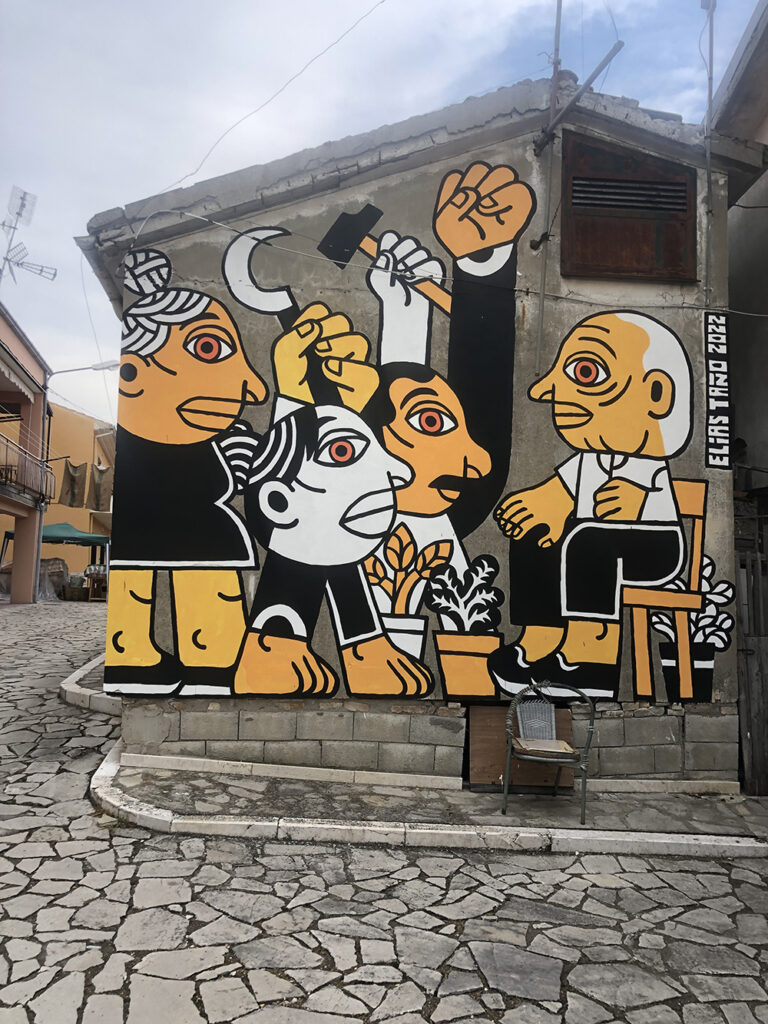
Why did you chose acrylic and brushes for your art ?
By a simple technical limitation. I never studied painting or other forms of large-scale work, so I limited myself to this technique which I was more or less able to learn on my own.
Even today, I’m not very good at it, and I’m afraid to try other techniques.
Does the absence of color gradation come from an aesthetic choice or from a technical constraint? (thinking about screenpriting) ?
It probably comes from my aesthetical references, since it was already present in my work before I started working on screen printing.
In direct color I find a certain type of direct application of ideas, it’s a way of working that eschews mannerism, and virtuosity.
And in essence it’s the solid foundation of what I think should be a political goal : with the minimum, give the maximum.
With what we have on reach, with the very elementary, to obtain convincing results, an art that interprets the human being in his worker’s condition.

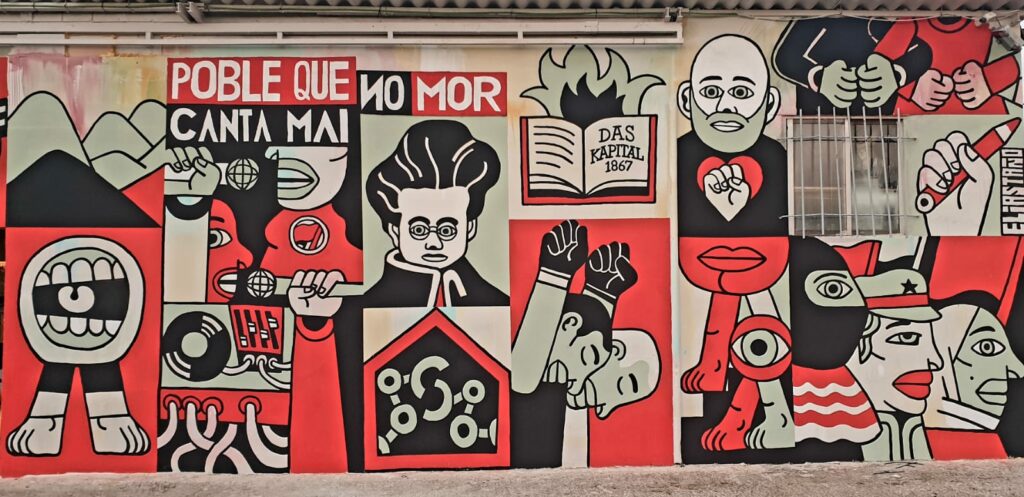
How did you discovered DIY culture ?
Thanks to a group of musicians, illustrators, theater people with whom I began to identify over the years, I became a member of groups, and we set up screen printing workshops and we focused on the need to generate our own cultural base, to take the means of intellectual production to generate an outside ecosystem (but not marginal) to another type of culture. A culture in clear opposition to the mercantilist interests of the art market, capital, and the idea of mandatory succes to live from art.
We discovered your art into autonomous places (Rozbrat in Poznań, Ex Caserma Rossani in Bari…).What does those places represents for you? How did you get in touch with the occupiers, and how did it work before you came paiting their walls?

Visiting those spaces was a way for me to see the world in a different way. These are spaces in which the power relations of the capitalist world do not exist. In which we try, with all our mistakes, to build another world.
And if not, at least free spaces from any mercantilist logic. So I would say that autonomous spaces are the only ones where human relationships are still possible.

In some cases, when you paint in these places, a different space is created both for those who inhabit it and for the inhabitants of the neighborhood. Art can sometimes be a window, sometimes it can connect different sensibilities and help compose an integrating message of different political struggles. From the dissidence of these spaces we can create a better world, but it is essential to communicate the beauty that is produced there: civic politics, culture, sport, participation, ecology, feminism…
Activism often lacks the ability to communicate the richness that happens inside the liberated spaces. And there art, murals that goes out into the street, which is painted collectively and which ultimately involves the whole neighborhood, the city in short, has created the community we need to break with the virus of capital.
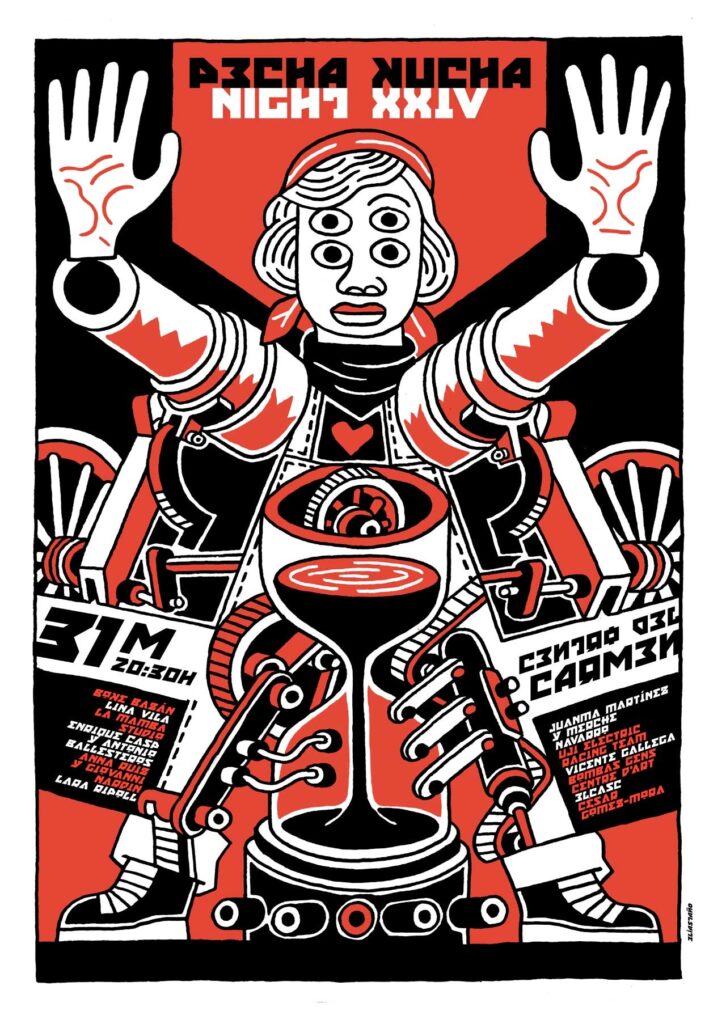
How did you developped your political counciousness? Though your artistic practice or other means ?
A Guatemalan activist once said to me: “first politics, then art”. And although for an artist it seems harsh and moralizing, it is not without reasons. I think our political feel comes first, your awareness that you have acquired over the years. An awareness that is crossed by your social condition, your sex, your origins, etc… you can spend many years becoming aware of this awareness. Learning to use art to systematize these sensitivities can takes time, but it is essential for those who feel that through art they can obtain a tool to fight against oppression. In my case, it was politics first. And then came the art. And many years later, this comrade from Guatemala came to remind me (at a time when I was lost perhaps ) that politics always comes first.
Can we talk of « graphical militancy » ? Do you thing it is possible to share a message with a painting ? What’s your point of view about this?
Absolutely. My form of activism in politics goes through graphic design. Often, I have neither the time nor the energy to be able to participate in projects, general assemblies that I consider essential. So, I tell the comrades to count on me in this aspect. What I can offer to the cause. I am one more part of the activism on these aspects. Neither better nor worse.
I believe many messages can be conveyed through a mural, and they are necessary and important. And for this reason, many murals have been erased by fascist groups. If it was not possible to share a counter-information, a message of resistance, why does it bother you so much? I believe it is necessary. It is a moral obligation of the artist who feels revolutionary, who believes in the destruction of this rotting system.
That he is ready to deprive himself of his privileges to arrive at the aim of the class war. Graphic militancy is possible, in addition, I would say that it is necessary. And it is not sufficiently taken seriously by the comrades.

You also founded a theatre company « Atirohecho », can you talk about it ?
Atirohecho is a political theater project that I set up with my partner Carla Chillida. She is the director and the revolutionary motor of the group, the ideal proletarian artist. It has been for me, from an early age, a school of political and artistic learnings. Atirohecho is a space where all the revolutions that need songs find their place. By reading, listening or dancing slogans. While the texts are written patiently and laboriously. It is precisely when activism, art and politics intertwine that Atirohecho occurs.
What do you think of institutional orders from town halls, who « hires » artists for « street-art » to paint huge murals? Don’t you think that those recovery attempts can skew the protester aspect of street paintings ?
There are very few cases where political artists took these spaces. Sometimes, in small events, in places where we are not expected. But the mercantile logic of this type of contracts gives me the intuition that they serve other ends than the interests of generating a framework of collective consciousness on the capitalism issues.
It’s like a showcase eager for tourism for passers-by who feel at ease, who find this type of monumental art pleasant, which does not conflict with social problems. It is spaces for an art that does not compromise (neither the one who pays nor the one who performs). That they do not alter the “social peace”.
Let them not interrupt the warm sleep of the bourgeoisie. I believe that these are not spaces where there is a battle of ideas, nor cultural. They are spaces of visual enjoyment, and so there is no room for dissenting voices. There can be social criticism, of course, but always based on a majority consensus. Not from radical positions. These projects are part of the bourgeois organization of the territory, a way of taking into account art as a simple decorative object.

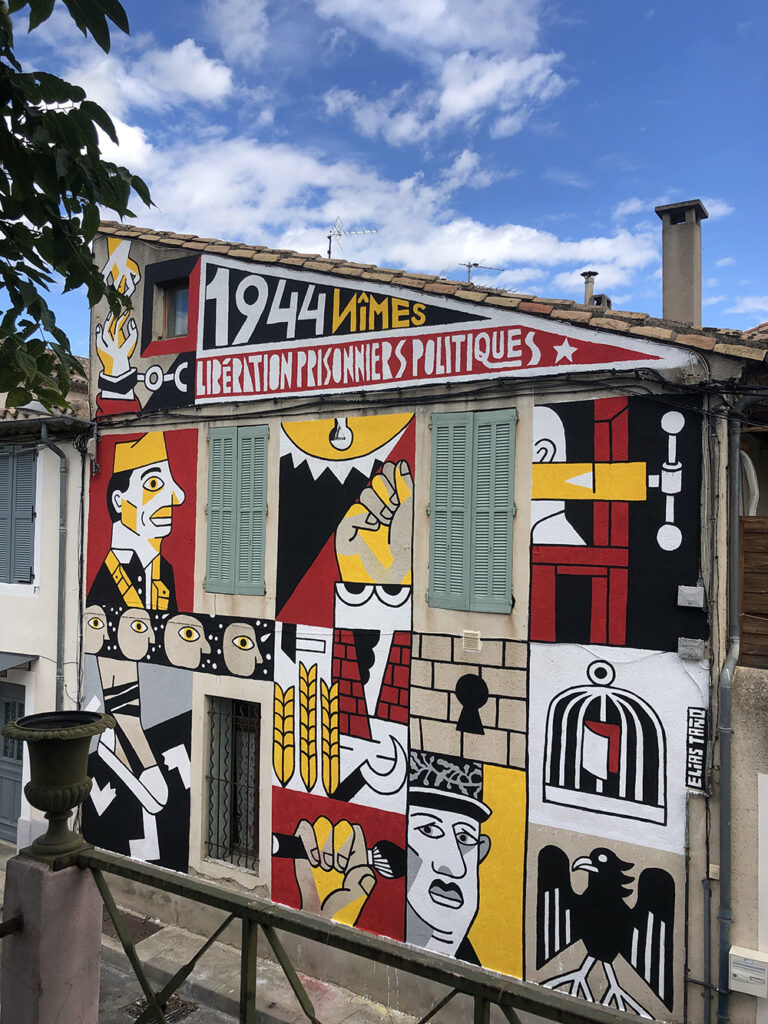
Any projects for the future?
A graphic novel about the MPAIC, the independence movement of the Canary Islands in the 70s. Through the figure of Antonio Cubillo, revolutionary and anti-colonialist activist. He is remembered for the pan-Africanist struggles for liberation from the economic and political shackles imposed on us in the sub-European territories. A project that will take me a lot of time…
Your dream place to paint ?
Wherever painting can generate a sense of community, lift morale, warm hearts, motivate the struggling spirit of the working class in their tireless fights: against capitalism, Zionism, machism, genocides. Against oppression, on the side of the wretchedof the earth.
What are the 3 musical albums which describes the best your graphical universe?
“Al final de este viaje” by Silvio Rodríguez
“Rural” by Tesa
“Las desheredadas” by Tribade

